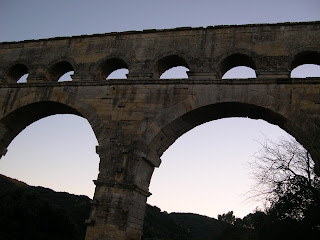On one of our first trips to France, we were caught in a torrential downpour in Paris. As we, along with 20 or so of our new, nearest and dearest friends, huddled under an awning, we watched a gentleman park his car. This was all the more enthralling since the parking space seemed to be no longer than his car. After several deft maneuvers, he was successful. We were in awe! Then he got out of his car, and we noted that he was dressed in an obviously, well-tailored, rather expensive suit. He opened the trunk of his car and fumbled around in it until he found an umbrella. His suit was soaked, but we found the umbrella was not for him. He opened the passenger door and offered his hand to an absolutely stunning woman; then he held the umbrella over her as they crossed the street and went into a door. He had remained uncovered the entire time – his suit was, no doubt, ruined. This incident taught me two things: (1) French men can be incredibly gallant – especially if one is a statuesque blond, and (2) the French seem to have their own take on parking. (Okay, so the transition is a stretch, but I really wanted to share the story of the man in the rain.)
We have seen some admirable parking since then (though none quite as spectacular) and have also noted that the French seem to have some unwritten rules covering the art of parking. For instance, ANY parking space available is an option – no matter how small. We’ve seen some cars parked in places so tight that it looks as if they were picked up and put in place. I’m in awe!
With a mini it's even easier to be creative in parking. How about SIDEWAYS?
Also, since parking places are hard to find (in Lyon, as in any big city), it’s okay to double park or park in places other than parking places as long as one turns on the flashing “hazard lights.” If another driver is blocked in and needs to get out or needs to drive down a lane or alley that is blocked, he simply leans on his horn. It may take a few beeps, but soon the owner of the creatively parked car will come running and move it. No harm done, and everyone is happy.
And, finally, as in many cities, one is supposed to pay to park. Simply pay at a conveniently located meter and put the printed receipt on the dash. BUT…what if you’ll only be a minute or two? Or, you’re in a real hurry? Or, you are out of change, and you don’t want to use your credit/debit card? Or, you just don’t feel like paying the stupid parking fee? Well, there’s a good chance the police won’t come around to check – right?
There is only one problem with the last two lines of reasoning: the local police do not recognize them as valid. In fact we have watched as small swarms of local police swoop down on parking areas and walk down a line of cars leaving little billet doux on windshields. We understand these tickets can be pretty pricey, and the penalties for not paying are onerous. Still it seems lots of drivers are willing to take the chance as you can see below.

Double parking? How about on the sidewalk?



























